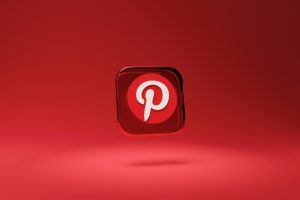Prior to 2013, Pinterest had no visible revenue streams other than its huge funding, and began to start running paid ads on its platform.
Pinterest started by testing “promoted pins,” from a select group of businesses. In a blog post titled “Planning For The Future,” CEO Ben Silbermann announced the move, pledging to users that the ads would be tasteful and constantly improved using feedback from users.
While we haven’t figured out all the details, I can say that promoted pins will be:
—Tasteful. No flashy banners or pop-up ads.
—Transparent. We’ll always let you know if someone paid for what you see, or where you see it.
—Relevant. These pins should be about stuff you’re actually interested in, like a delicious recipe, or a jacket that’s your style.
—Improved based on your feedback. Keep letting us know what you think, and we’ll keep working to make things better.
Silbermann said the first few ads will be tests that no company will have paid for, and will be tied to relevant searches, for example, a picture of a Darth Vader costume will show up in a Pinterest search for “halloween.
The march towards paid advertising was inevitable at Pinterest. The platform was already partnering with several brands for listing product prices, and companies were engaging the platform in different ways, like J.Crew who debuted its entire fall catalog on Pinterest first.
Boosting Your Business with Visual Advertising

Image Source: FreeImages
Discover the untapped potential of Pinterest ads and learn how to leverage this unique platform to drive traffic, increase engagement, and boost sales.

Introduction
In today’s digital landscape, social media platforms have become indispensable tools for businesses looking to expand their online presence and connect with their target audience. While platforms like Facebook, Instagram, and Twitter have dominated the advertising scene, there’s one platform that stands out as a powerful and often overlooked advertising opportunity: Pinterest.
Understanding Pinterest Ads
Pinterest, often referred to as a visual search engine, offers a distinct advertising experience compared to other social media platforms. With over 478 million monthly active users, Pinterest provides a highly engaged and targeted user base that is receptive to discovering new products and ideas. Pinterest ads, also known as promoted pins, allow brands to reach this vast audience and drive traffic directly to their websites.
The Benefits of Pinterest Advertising
1. A Platform for Discovery
Unlike other social media platforms where users primarily connect with friends and family, Pinterest users come to the platform with an open mind, actively seeking inspiration and new ideas. This makes Pinterest a prime platform for brands to showcase their products and services. With visually stunning pins, you can capture users’ attention and inspire them to explore and engage with your brand.
2. Cost-Effective Advertising
Pinterest ads offer an impressive return on investment (ROI) compared to other digital advertising platforms. In fact, Pinterest ads are 2.3 times cheaper than other platforms, making it an attractive option for businesses of all sizes. With an average cost per click of $1.50, Pinterest ads provide an affordable way to reach a highly targeted audience and generate leads.
3. Highly Engaged and Targeted Audience
Pinterest boasts a highly engaged user base, with users spending an average of 14.2 minutes per session on the platform. Furthermore, Pinterest users are 47% more likely to be introduced to new brands compared to users on other social media platforms. This presents a significant opportunity for businesses to increase brand visibility and reach new potential customers.
4. Niche Targeting and Personalization
Pinterest offers a range of targeting options, allowing businesses to reach specific demographics, locations, interests, and more. By leveraging Pinterest’s targeting capabilities, you can ensure that your ads are shown to the right audience at the right time. Additionally, Pinterest’s Taste Graph technology, which tracks and understands users’ evolving tastes and interests, allows for even more precise targeting and personalization.

Pinterest Advertising Options
Pinterest offers several advertising options beyond promoted pins, each with its own unique features and benefits. Let’s explore some of these options:
1. Idea Pins
Idea Pins, formerly known as Story Pins, provide an opportunity to share interactive and engaging content with your audience. With a combination of videos and images, Idea Pins allow you to showcase your products, demonstrate tutorials, and provide valuable information. By incorporating user tagging, interactive stickers, and topic hashtags, you can create an immersive experience for your viewers.
2. Try-on Product Pins
For brands in the beauty and fashion industries, Try-on Product Pins offer an innovative way for users to virtually try on cosmetics and accessories using augmented reality technology. By uploading a product catalog and integrating with Pinterest’s Try-on feature, users can visualize how your products will look on them before making a purchase.
3. Collection Ads
Collection Ads are ideal for e-commerce brands looking to showcase their product offerings. These ads feature a large video or image and three supporting images. When a user clicks on a Collection Ad, they are taken to an ad detail page where they can explore up to 24 related products from your catalog. This provides an opportunity to expose potential customers to a wide range of products and increase their chances of making a purchase.
4. Carousel Ads
Carousel Ads allow businesses to showcase multiple images within a single ad. Users can swipe through up to five images, each featuring a different product or showcasing different use cases for the same product. By leveraging Carousel Ads, you can tell a visual story and capture users’ attention, encouraging them to engage with your brand.
5. Shopping Ads
Pinterest’s Shopping Ads feature pulls product information from your catalog and displays a single image to users who are most likely to be interested in that particular product. By integrating with platforms like Shopify, you can seamlessly sync your product catalog and reach potential customers with highly relevant and personalized ads.
6. Product-Rich Pins
Product-Rich Pins provide detailed information about your products, including price, stock availability, and a direct link to purchase. These pins update in real-time, reflecting any changes made on your website. By leveraging Product-Rich Pins, you can provide users with accurate and up-to-date information, increasing their confidence in making a purchase.
Best Practices for Pinterest Advertising Success
To maximize the effectiveness of your Pinterest ad campaigns, follow these best practices:
1. Continually Adjust and Optimize Your Campaigns
Pinterest is a visually-driven platform, and different imagery may resonate differently with your audience. Continuously test and iterate your campaigns by trying out different variations of imagery, including photos with and without text overlays. Experiment with different keywords, bid amounts, and audience targeting options to find the optimal combination that drives the highest engagement and conversions.
2. Craft Compelling Calls-to-Action (CTAs)
While direct CTAs are not allowed in the image itself, you can include them in the pin’s description. Use persuasive language to encourage users to take action, such as “Sign up today” or “Download the free guide.” However, strike a balance and avoid being overly salesy, as Pinterest users value appealing imagery and creative ideas.
3. Utilize Relevant Keywords
Pinterest allows you to associate up to 150 keywords with each promoted pin, but it’s recommended to focus on using 30 relevant keywords per pin. Ensure that these keywords are closely aligned with your pin’s content and the landing page users will be directed to. Targeting irrelevant keywords can negatively impact your click-through and conversion rates, wasting your ad spend.
4. Leverage Targeted Audiences
Make use of Pinterest’s targeting options to show your pins to the most relevant audience. Consider factors such as location, device, gender, and language to ensure your ads reach the right users at the right time. By combining targeted audiences with strategic keyword selection, you can effectively reach users who are most likely to convert.
5. Bid Aggressively and Experiment
In the initial stages of your Pinterest ad campaigns, consider bidding slightly higher to gather valuable data and insights. This allows you to gain more conversions, which can improve your ad’s relevance even when you eventually lower the bid. Experiment with different bidding strategies to optimize your click-through rates and conversions.
Conclusion
Pinterest ads offer a unique and valuable opportunity for businesses to reach a highly engaged and receptive audience. By leveraging the power of visually appealing pins and strategic targeting options, businesses can drive traffic, increase engagement, and boost sales on this often overlooked platform. With continuous optimization and adherence to best practices, your Pinterest ad campaigns can unlock the untapped potential of this visual discovery engine.

Embrace the power of Pinterest ads and position your brand for success in the digital age. Start leveraging the visual appeal and targeted nature of Pinterest today to connect with your audience, increase brand visibility, and drive conversions.
Additional Information: The article should maintain a conversational tone, providing actionable insights and practical tips for businesses looking to venture into Pinterest advertising. The tone should be informative, yet engaging, capturing the reader’s attention and keeping them interested throughout the article. The primary keyword is “Pinterest ads,” and secondary keywords include “promoted pins,” “Pinterest advertising,” and “visual advertising.”









